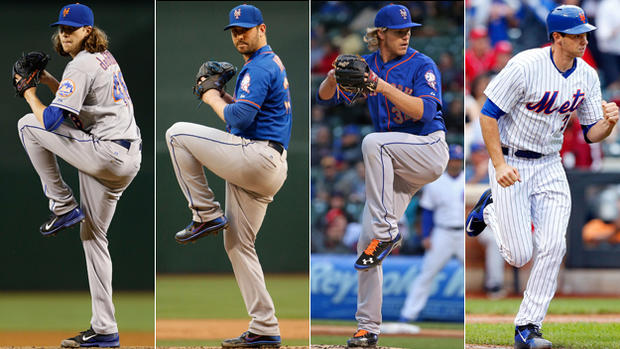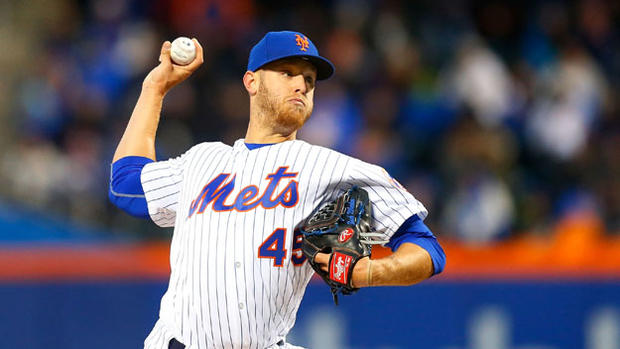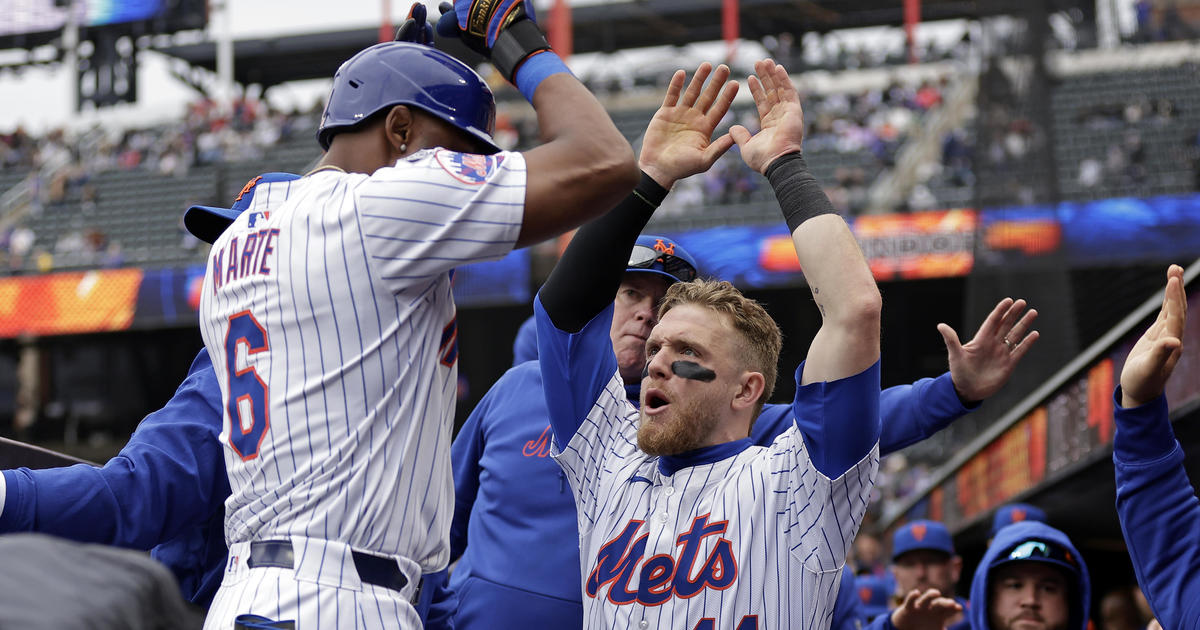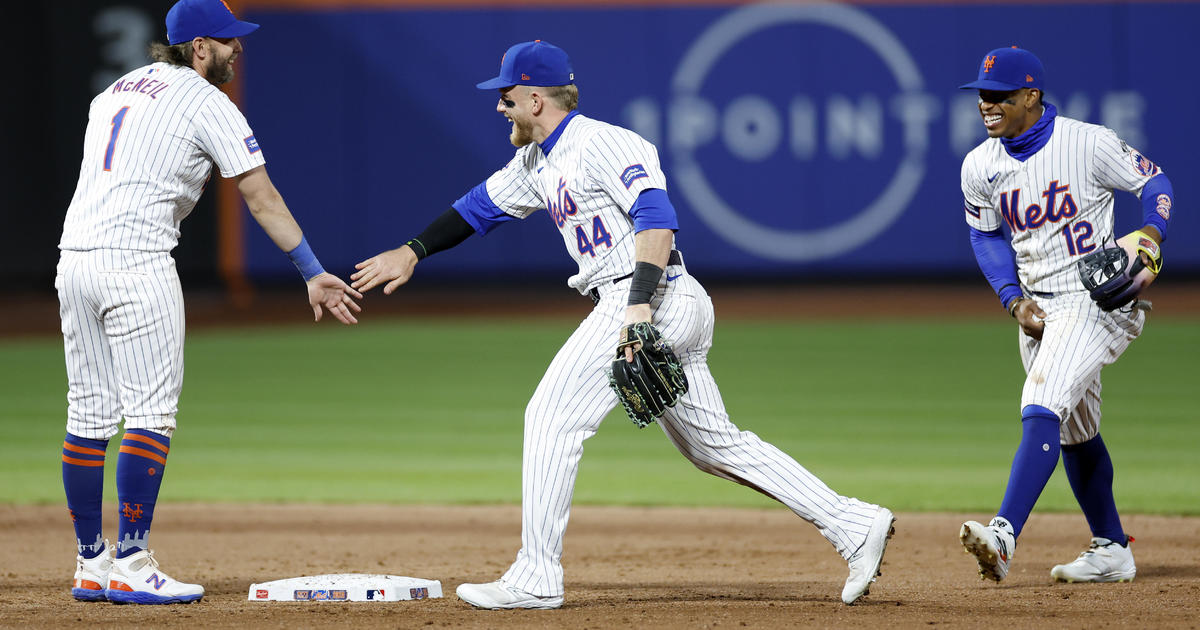Palladino: Mets' Heralded Rotation May Already Have Seen Its Best Days
By Ernie Palladino
» More Ernie Palladino Columns
Eventually, the names the baseball world spoke of in such reverential tones the last few seasons will reunite.
Noah Syndergaard, Jacob deGrom, Matt Harvey, Zack Wheeler, and Steve Matz will come together again to form the Mets' starting rotation. From what is known already, that could take at least two to three months, assuming the "all positive" second opinion Los Angeles-based Dr. Neal ElAttrache offered Thursday on Syndergaard's strained right lat muscle did not involve a longer timeframe.
Then, it becomes a question of how well that rotation will perform. By the looks of things, the answer will disappoint all those who predicted the quintet would dominate baseball for as long as the franchise wanted to keep it together.
In fact, the Mets' starters could be looking at a mediocre future. Injuries have a way of doing that.
And since this issue involves the Mets, a team snake-bitten with injuries over the past three seasons, it's worth recounting another highly-anticipated rotation wrecked by the injury bug.
In the mid-1990s, Bill Pulsipher, Jason Isringhausen, and Paul Wilson were three Mets farm products who were supposed to form the next great threesome that would carry on the excellence of the champion Dwight Gooden-Ron Darling-Sid Fernandez triumvirate of the '80s.
They were going to be great, except that they never did get going. The left-handed Pulsipher and the righty Isringhausen came up together in 1995. Isringhausen caught fire immediately and finished 9-2 with a 2.81 ERA over 14 starts. Pulsipher showed enough with his 5-7, 3.98 numbers to not leave anyone worried.
That changed the very next year. Pulsipher underwent Tommy John surgery at the end of spring training. The hard-throwing Wilson, drafted No. 1 overall by the Mets in 1994, spent much of his rookie season on the DL. And Isringhausen spent most of 1996 battling rib-cage, bone spur, and labrum issues.
They were all gone by 1999. Only Isringhausen would experience anything resembling sustained success -- as a closer for Oakland and St. Louis.
It may be too early to say definitively that the current rotation will suffer the same fate, only slower. But the cracks are there, and they're getting bigger.
It's worth noting that only a rare offensive barrage bailed Jacob deGrom out Wednesday after a five-run, five-inning struggle in an eventual 16-5 win. He has been the Mets' most consistent pitcher after ulnar nerve surgery shortened his 2016 campaign. But, even though his strikeouts are back to double digits for the most part, he alone can't constitute a great rotation.
That takes a village, and so far the other residents haven't lived up to standards.
For all of Harvey's bulldog attitude, his performance since he talked his way back into the fateful ninth inning of Game 5 against the Royals in 2015 has been anything but dominant. His fastball only flashed in spots while he went 4-10 with a 4.86 ERA last season before doctors identified Thoracic Outlet Syndrome as the culprit behind numbness in his hand. He lost an upper rib and the rest of the season to that.
He hasn't come back strong. After giving up 12 runs in 9 2/3 innings in his last two starts, the questions as to whether Harvey will ever be the same have begun. His mechanics still are not there, though he did say he felt the best he has this season after Tuesday's six-run, 5 ½-inning loss in Atlanta that dropped his record to 2-2.
Harvey hasn't won in four outings, and his ERA after a 2-0 start has gone from 2.92 to 5.14.
Matz, the lone lefty, hasn't even had a chance to contribute as he remains on the DL with a sore elbow. Still weeks away from returning, he was already trying to come back from the bone spur surgery on his elbow that ended last season for him.
Wheeler, finally saddled up again after an obstacle-filled 2016 recovery from Tommy John surgery, has looked anything but efficient in five starts. The Mets have him under a strict innings count, but his 4.78 ERA indicates he's far from original expectations.
He went three innings Thursday before rain caused a postponement, but it took him 68 pitches to get that far. He had pitched into the sixth inning only twice in five previous starts, and might not have made it Thursday had conditions stayed dry.
Syndergaard's pride lies in his velocity. Whether he'll be able to push the speed gun as he has once he returns could impact his future.
MORE: Sims: Altered Mechanics Due To Underlying Issue Could Have Led To Syndergaard's Partial Muscle Tear
And, leave it to the Mets, Syndergaard's issue is a fairly rare one according to sports performance expert Eric Cressey. He wrote that few pitchers get lat injuries. But when they do, some take as long as 10 months before they feel 100 percent because of the muscle's relationship with other nearby structures.
It wouldn't be a stretch, then, to believe Syndergaard may need the whole second half of the season to ease his way back up the speed ladder.
The rotation hasn't collapsed into mediocrity yet. And the Mets aren't giving up on any of their five big names. It's too early for that.
But injuries have wrecked expectations before.
This rotation may already have seen its best days.
Follow Ernie on Twitter at @ErniePalladino





